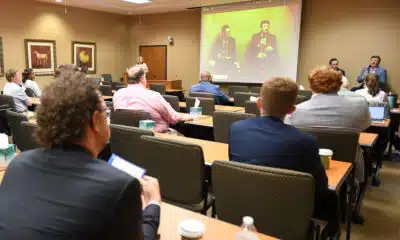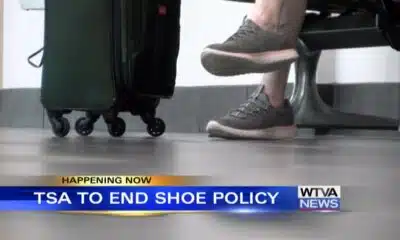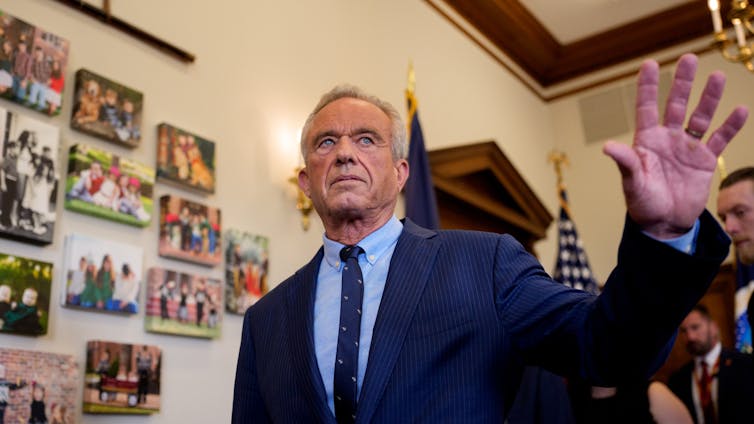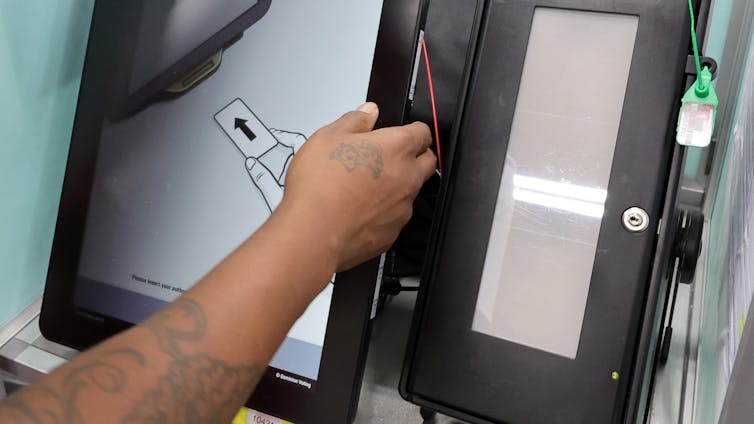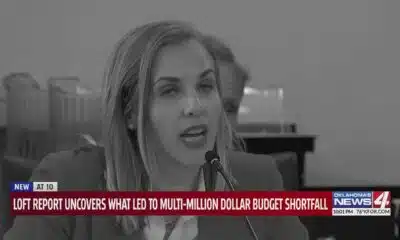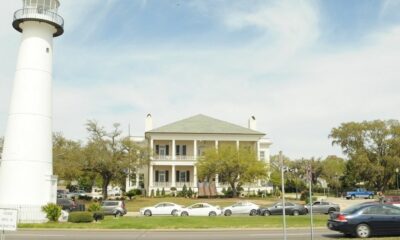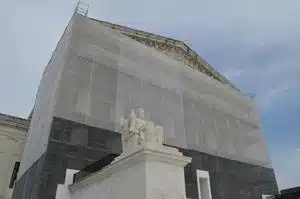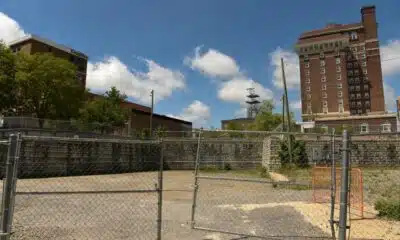
AP Photo/Lenny Ignelzi, File
Joanne M. Pierce, College of the Holy Cross
Pope Francis recently appointed Cardinal Robert McElroy, a harsh critic of President-elect Donald Trump’s immigration policy, to head the Catholic Archdiocese of Washington, D.C.
The move has led to concerns among some Catholics about how he might interact with the new administration, especially since Trump has announced plans to appoint Brian Burch, the head of a conservative Catholic political group, as ambassador to the Vatican.
As a specialist on medieval Catholicism, I am aware of the important roles that cardinals have played over the centuries in church administration and secular politics.
In addition to pastoral ministry, cardinals serving as bishops in their own countries can play an important part in shaping public opinion. Others are bishops who have served or still serve as papal ambassadors in various countries around the world.
Ancient origins
After the legalization of Christianity in the early fourth century by the Emperor Constantine, Christianity spread rapidly in both the Western and Eastern parts of the Roman Empire. Bishops, who were the heads of the central churches in cities and supported by the emperors, met together in several general – ecumenical – councils to condemn heresies and assign authority more clearly.
By the end of the fifth century, bishops of five major cities, including Rome, were given wider authority over an expanded geographical territory. They were called patriarchs, from the Greek and Latin words meaning “father.”
By this time, Rome survived numerous attacks from pagan European tribes and the Asian Huns before finally succumbing to Germanic barbarians in 476 C.E..
During this tumultuous century, the church had assumed more secular authority and had largely taken over Rome’s civil administration.
In fact, Justinian, emperor of the Eastern Roman Empire in the sixth century, referred to the pope as patriarch not just “of Rome,” but of “the West,” implicitly extending papal jurisdiction over all the churches of the former Western Empire; the popes themselves did not use the title until the seventh century.
And as Roman Christianity spread through Western Europe, so did this intertwining of political activity and religious authority.
First cardinals
In its earliest centuries, Christianity developed three classes of ordained clerics, each with different responsibilities: Bishops oversaw churches in a specific geographic area; priests ran individual local church communities – parishes; and deacons assisted the priests, especially in charitable outreach.
By the seventh century, deacons from seven of the oldest and most important churches of Rome served as special advisers to the popes. They were called cardinals, from Latin “cardo” – meaning hinge – and “cardinalis,” meaning key or principal.
Later, priests and bishops were also chosen for this honor. Over time, cardinals became powerful members of the church in Rome and Italian Catholicism.
After Christianity was legalized in the fourth century, the faith expanded rapidly beyond Rome’s old imperial boundaries. However, cardinals were not named from these countries until much later, in the 12th century.
Missionaries to Europe
Popes began to send missionaries to convert other pagan peoples in Europe. As early as the fourth and fifth centuries, some leaders of various Germanic tribes – like Clovis, king of the Franks – accepted baptism for themselves.
And thanks to another papal missionary, Augustine of Canterbury, the early Celtic church in England, adopted Roman Christian practice in the seventh century.
However, the 10th and early 11th centuries were a dark time for the papacy. Politically powerful families in Rome competed to have relatives chosen as pope, and there was no set mechanism for electing one. Some of these popes led immoral lives; at one point, a 20-year-old was chosen as Pope Benedict IX, who then sold the office to another cleric.
The power struggle for the papacy, not missionary activity, had become the main focus for Romans. But by the end of the 11th century, with the help of powerful European leaders called the Holy Roman Emperors, a series of reform-minded clerics were named pope.
One of them, Pope Nicholas II, set new rules for the selection of a new pope: He was to be elected by an assembly of cardinals. Later, a two-thirds majority was specified for election.
Popes also refocused their efforts on missionary activity. One result was the creation of the first cardinals outside of Italy: in France, England and Germany. However they were heavily outnumbered by Italians. In the later medieval period, cardinals from Austria, Hungary, Poland, Portugal and Spain would also join what came to be known as the College of Cardinals.
Political activity
Increasingly, cardinals were treated as important dignitaries and addressed as “Eminence,” even though many were not the sons of kings or nobles. Certainly, most of them became involved in European politics of the later medieval period, since secular and religious interests often intertwined. Many became wealthy patrons of the arts and architectural projects.
Not only were cardinals the primary papal advisers, but some also served in secular political positions. One of the best-known is Thomas Wolsey, who became Lord Chancellor of England in the 16th century under King Henry VIII, despite being a commoner.
Two cardinals also served as chief ministers to King Louis XIII of France in the 17th century: the Frenchman Armand-Jean du Plessis de Richelieu and Jules Mazarin — an Italian by birth.
Even into the modern period, naming a foreign cleric as cardinal was taken as a measure of the importance of their country in the Catholic world. For example, the first American cardinal, John McCloskey, was created cardinal in 1875, some 100 years after the birth of the United States. The first from strongly Catholic Latin America was named in 1906, when a Brazilian bishop, Joaquim Arcoverde de Albuquerque Cavalcanti, was created cardinal.
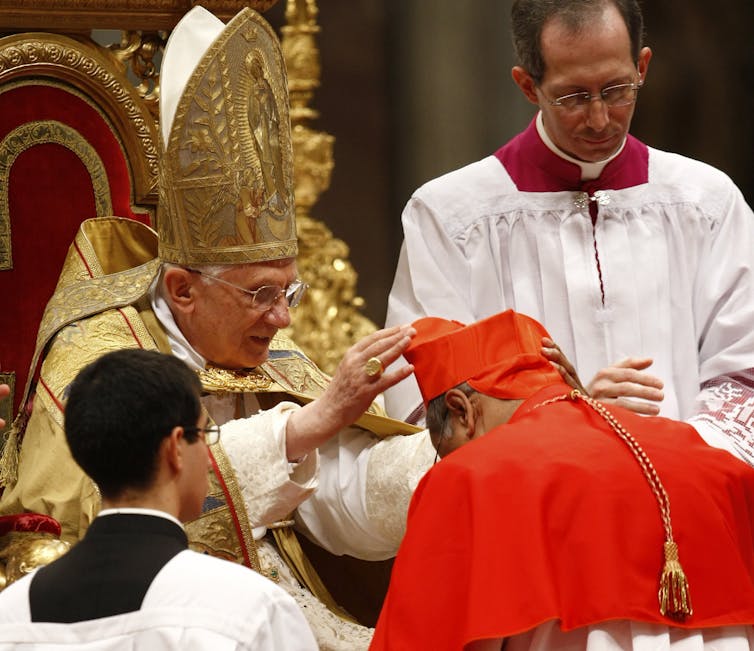
AP Photo/Pier Paolo Cito
The Philippines, another strongly Catholic country, did not have a cardinal until Rufino J. Santos in 1960. The small Catholic community in pluralistic Sri Lanka was not represented by a cardinal until 2010, when Malcom Ranjith was chosen.
Contemporary issues
Since 1962, only bishops can be created cardinals; priests must agree to be ordained as bishops before being made cardinal.
Some nominees have refused the honor because they were unwilling to be ordained bishops for various reasons: health, advanced age, or because they didn’t want to leave their religious communities. Occasional exceptions can be made to this rule – for example, Cardinal Avery Dulles was a Jesuit and over 80 years old when named, and most recently, Timothy Radcliffe, a Dominican priest and theologian, is a 79-year-old member of the Dominican order. Both were allowed to remain priests.
Today, many cardinals are engaged in pastoral ministry, as bishops of a diocese or archbishops of a larger archdiocese. Other bishops and cardinals serve in one of the several departments, called dicasteries within the Vatican bureaucracy.
In addition, there are other offices within the College of Cardinals. For example, the leader or head of the college is called the dean; one of his duties is to coordinate the conclave that will be convoked in the event a pope dies or resigns.
Cardinals are appointed for life, although they can resign, voluntarily or under pressure. Resignation is rare; since 1900, only three have done so.
Since his election in 2013, Francis has held 10 consistories – special assemblies of the College of Cardinals – appointing a majority of the cardinals under 80 years old who will be eligible to elect his successor.
Not only has Francis chosen like-minded progressive candidates, but he has also included candidates from countries that are more marginalized or torn by violence. Most recently, cardinals have been selected from the Ivory Coast and Ukraine; another is a Chilean-born archbishop of Palestinian descent. These new cardinals contribute new and, perhaps, challenging perspectives to the once-heavily European College of Cardinals.
I expect that in the future, all these cardinals, including Cardinal McElroy in his key position, will play an important role in supporting or criticizing the politics of both church and state.
Joanne M. Pierce, Professor Emerita of Religious Studies, College of the Holy Cross
This article is republished from The Conversation under a Creative Commons license. Read the original article.

